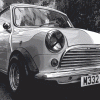To add. I tested all the systems I assembled on a mini hill climb between the A505 bypass and cadington (before it got ruined)for those of you that know it.
With a full RC40 kit fitted I could hold third quite comfortably, it would still pull but I would lose speed if I selected 4th while still on the steep section of the gradient and have to shift back to third.
With the system I run now with the 4 1/4" oval exit not only can I shift into 4th but it allows me to continue to accelerate.
Same hill same engine. Proof of the pie as they say.
At the time I spoke to an engine test bed engineer, told him how I had gone about my research for want of a better word and he said your approach in engineering terms was not pretty but you seem to have fluke'd it. Your combination of bends, pipe and back box have worked out well against the odds, I'm surprised at how well it seems to have worked.
You can't change the laws of physics or Bernoulli's Theorem, but what I think has happened is that your exhaust end pipe is so big that the actual final exhaust exit is the end of the smaller diameter pipe and that is probably about right. The oversize box is not a part of the exhaust as such at all as it does nothing.
Imagine a hose pipe with a nominal 1/2" bore and a good water pressure. At the end the water will come out strongly in a long arc. If you increased it to, say 1" the water would lose it's velocity and not exit efficiently. However, if you put a 3" diameter end pipe, the water would just come out strongly without touching the large diameter end.
Think about it. Top performance cars have constant diameter exhaust pipes. My wife's 2.5 litre BMW has twin 1.75" final exit pipes, so a 1275 Mini engine would, by logic, need a single 1.75" pipe, which is what all the experts advise. With the resources of a major manufacturer, especially one which wants to compete with Mercedes and Audi, if a much larger exhaust could give more power then they would use it.
Edited by Cooperman, 07 February 2014 - 07:03 PM.

















